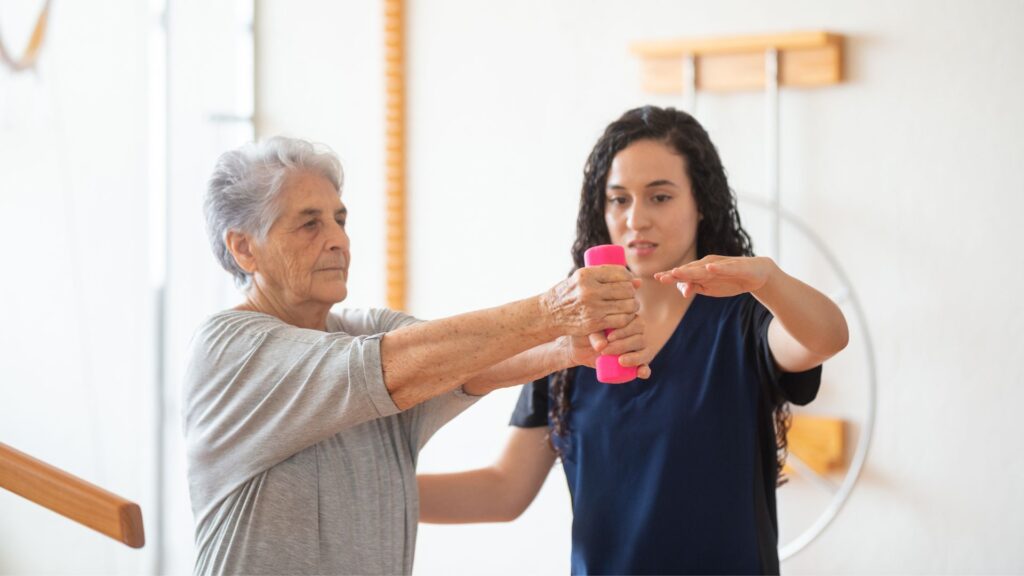
Are you a foreign-trained physical therapist with dreams of practicing physical therapy in the United States? As someone who has personally navigated the process and guided numerous students like you, I understand the unique challenges and uncertainties you may be facing. In this blog post, I will share my expertise and firsthand experience to help you navigate the step-by-step process of obtaining a PT license as a foreign-trained physical therapist in the USA.
I understand that the process of obtaining a license as a foreign-trained physical therapist in the USA can seem overwhelming and confusing at first. With numerous requirements, paperwork, and unfamiliar terminology, you may feel unsure about where to even begin.
You’re not alone in this journey, and I’m here to simplify the process for you. I have been through this and I recognize the need for clear guidance. Consider this blog post as your roadmap, providing step-by-step directions and valuable insights to make the journey less daunting.
To be able to start working as a physical therapist in the USA you will need to work on 2 important things:
- A valid visa that legally allows you to work in the USA
- US physical therapy license
Visa requirements for foreign physical therapists in the USA:
(Disclaimer: I help you with the US licensing process, discussed later in this article. I am not an immigration expert/ lawyer. Please consult immigration experts/lawyers for the most updated and accurate information about US Visas.)
Here are some visas that may allow you to work:
- Student visa: Also known as F1 visa. It is provided to students coming to the USA for higher education. If your course is STEM-approved, you get an OPT extension and you may work during that period.
- STEM OPT (Optional practical training) is an extension available for F1 students who have completed a degree in STEM (Science, Technology, Engineering, or Mathematics) field. It allows eligible students to work in the United States for up to 36 months after graduation, providing valuable practical experience in their chosen field. It is a good idea to ensure that the course you plan to enroll in is STEM-approved so that you can get advantage of 36 months of OPT extension period.
- Work Visa: This is also known as an H1b visa. While working on OPT, many students find employers who file for their H1b visas. That way they can legally continue to work in the USA on an H1b visa after their OPT extension period is over.
- Dependent Visa: This is also known as an H4 visa. This is issued to spouses of H1b workers. You get this visa when your husband/ wife is already working in the USA on an H1b visa. You can work on a dependent visa only if you have EAD. (Employment Authorization Document). H4 article link
You read my experience of getting licensed in the USA on a dependent visa here.
A word about the healthcare worker’s certificate (HCWC)
The United States Commission on Immigration Services (USCIS) has strict requirements for all foreign-trained healthcare workers, including PTs. You will need HCWC in order to obtain a work visa. It is not needed when you have H4 EAD or when working on OPT extension.
Getting licensed in the USA
This involves 3 main steps
Let’s break down each step to understand this process better
Credential evaluation
As a foreign-trained physical therapist in the USA, you need to provide evidence that your education is substantially equivalent to a physical therapist trained in the USA. This process involves submitting your academic documents such as your transcripts, mark sheet syllabus, etc to a credentialing agency.
The credentialing agencies recognized by USCIS (U.S. Citizenship & Immigration Services) to issue healthcare worker certificates are:
- Foreign Credentialing Commission on Physical Therapy (FCCPT)
- Commission on Graduates of Foreign Nursing Schools (CGFNS)
(I completed my credential evaluation through FCCPT. )
Education is evaluated based on the following categories:
- Professional education: Education involving physiotherapy subjects such as biomechanics, neurology, etc.
- General education: Education in a related field such as statistics, chemistry, etc.
- Clinical education: Number of hours spent treating patients under the direct supervision of a physiotherapist
- Other related coursework: Subjects such as ethics, community health, and clinical decision-making.
After application, FCCPT gives detailed reports citing “deficiencies” in education. The deficiencies can be in one or more categories mentioned above. The candidate must complete the deficiencies to be eligible for the license exam. (Deficiencies are typically completed by taking suggested courses and passing relevant exams).
Once you finish the required coursework, you need to apply again for the review and obtain clearance from the licensing agency.
State board approval
You will need to submit your credential evaluation to the state board. Along with that, you will be completing other state board requirements. These vary from state to state and often include:
- Toefl exam
- Jurisprudence exam (Law exam)
- Criminal history and background check
- Work experience
You need to check with the state board to understand the most recent requirements for your state. Make sure you learn about the state requirements prior to starting credential evaluation.
License exam
During this process, you will also need to register with FSBPT (The Federation of State Boards of Physical Therapy). This is the board that conducts the license exam (NPTE). Once all the requirements are met, your state board will notify FSBPT. After jumping through all these hoops and completing all the steps in this process, you will receive an ‘authorization to test’ email from FSBPT to go ahead and schedule the exam.
NPTE is an online MCQ-based examination that consists of 250 questions administered over five and a half hours. (Changes coming in 2024). NPTE scores range from 200 to 800. The passing score is 600 and above. NPTE’s first-attempt passing rate for foreign-trained physical therapists is between 27% – 45%.
So what’s next for you?
Once you have figured out the immigration process, start with the following steps:
- Collect the required documents from your university.
- Reach out to licensing agency and understand unique requirements for you
- Reach out to the state board and understand their requirements
Embarking on a career as a foreign-trained physical therapist in the USA requires careful navigation through a series of steps. I understand that the whole process can feel overwhelming. It has multiple steps and it can look different for different people based on individual situations. However, I can ascertain that obtaining a US PT license is totally worth it. If you are confused, reach out to me to set up one on one consultation, and I can help answer your questions about the licensing process. You can get on the waitlist for one on one consultation by hitting the link below!

Hello, My name is Tejashree Limaye. I am a physiotherapist with 10+ years of experience. I help you go from being stuck in your career to finding a job you love! I provide career guidance about clinical and non clinical PT career in India. I also help you with US PT licensing process. Welcome to my blog, I hope you find the exact guidance you have been looking for!
